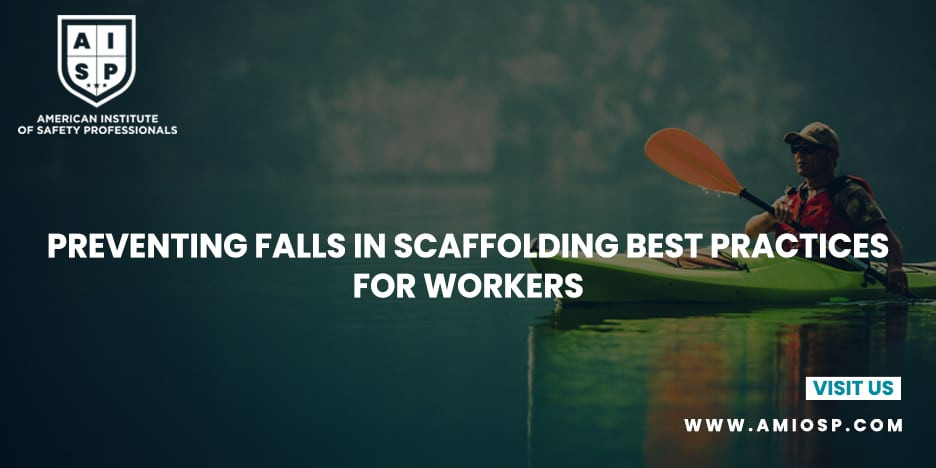Introduction
Scaffolding is a common structure used in construction,
maintenance, and renovation projects to provide a safe working platform at
elevated heights. However, working on scaffolds also presents inherent risks,
particularly the risk of falls. Falls from scaffolding can result in severe
injuries or even fatalities. To ensure the safety of workers and create a
secure working environment, it is crucial to implement best practices for fall
prevention. In this blog post, we will discuss essential guidelines and
strategies for preventing falls in scaffolding.
Proper
Scaffold Design and Construction
The design and construction of scaffolding play a crucial
role in preventing falls. It is essential to ensure that scaffolds are designed
and constructed by qualified professionals in accordance with industry
standards and regulations. The scaffold should be capable of supporting the
intended load and provide a stable platform for work. Regular inspections and
maintenance should be conducted to identify and address any structural issues
promptly.
Competent
and Trained Workers
Competent and trained workers are essential for safe
scaffold use. Workers should receive comprehensive training on scaffold
assembly, inspection, safe access and egress, fall protection systems, and
emergency procedures. Training should also cover hazard identification and
proper use of personal protective equipment (PPE). Employers should ensure that
only qualified individuals are allowed to erect, dismantle, or modify
scaffolding.
Pre-Work
Inspections
Before starting work on a scaffold, a pre-work inspection
should be conducted to assess its condition and identify any potential hazards.
Inspect all components of the scaffold, including platforms, guardrails, toe
boards, and access points. Check for stability, secure connections, and proper
installation. Any damaged or defective parts should be replaced before work
commences.
Proper
Access and Egress
Safe access and egress are crucial for preventing falls in
scaffolding. Use properly designed and constructed access points, such as
stairs, ladders, or ramps. Ensure that access points are well-maintained, free
from obstructions, and provide a secure means of climbing up and down the
scaffold. Workers should be trained on the correct techniques for ascending and
descending scaffolding safely.
Guardrails
and Toe Boards
Guardrails and toe boards are critical components of
scaffolding safety. Install guardrails on all open sides and ends of the
scaffold to prevent falls. The guardrails should be at least 42 inches high and
include a mid-rail and toe board. Ensure that the guardrails are securely
fastened and provide continuous protection around the working area.
Proper
Use of Personal Fall Protection Systems
Personal fall protection systems should be used when working
on scaffolding at heights where a fall hazard exists. This includes the use of
harnesses, lanyards, and anchor points. Workers should be trained on the proper
fitting, inspection, and use of personal fall protection equipment. Anchor
points should be properly installed and capable of supporting the intended
load.
Regular
Inspections and Maintenance
Regular inspections and maintenance are crucial for scaffold
safety. Inspect the scaffold before each work shift and address any issues
promptly. Pay attention to loose or missing components, damaged guardrails,
unstable platforms, or any signs of deterioration. Ensure that all connections
are secure and that the scaffold remains stable during use. Proper maintenance
and repairs should be performed by qualified personnel.
Adverse
Weather Conditions
Adverse weather conditions can increase the risk of falls in
scaffolding. Strong winds, rain, ice, or snow can compromise the stability and
safety of the scaffold. It is essential to monitor weather conditions and
suspend work if conditions become unsafe. Take appropriate measures, such as
adding additional ties or bracing, to enhance the stability of the scaffold in
adverse weather.
Conclusion
Preventing falls in scaffolding requires a combination of
proper design, competent workers, regular inspections, and adherence to safety
guidelines. By implementing the best practices outlined in this blog post,
employers can create a safe working environment and minimize the risk of
accidents. Remember, fall prevention is essential for protecting the lives and
well-being of workers in scaffolding operations.
References:
- Occupational
Safety and Health Administration (OSHA) - www.osha.gov
- Canadian
Centre for Occupational Health and Safety - www.ccohs.ca












0 comments
No Comments